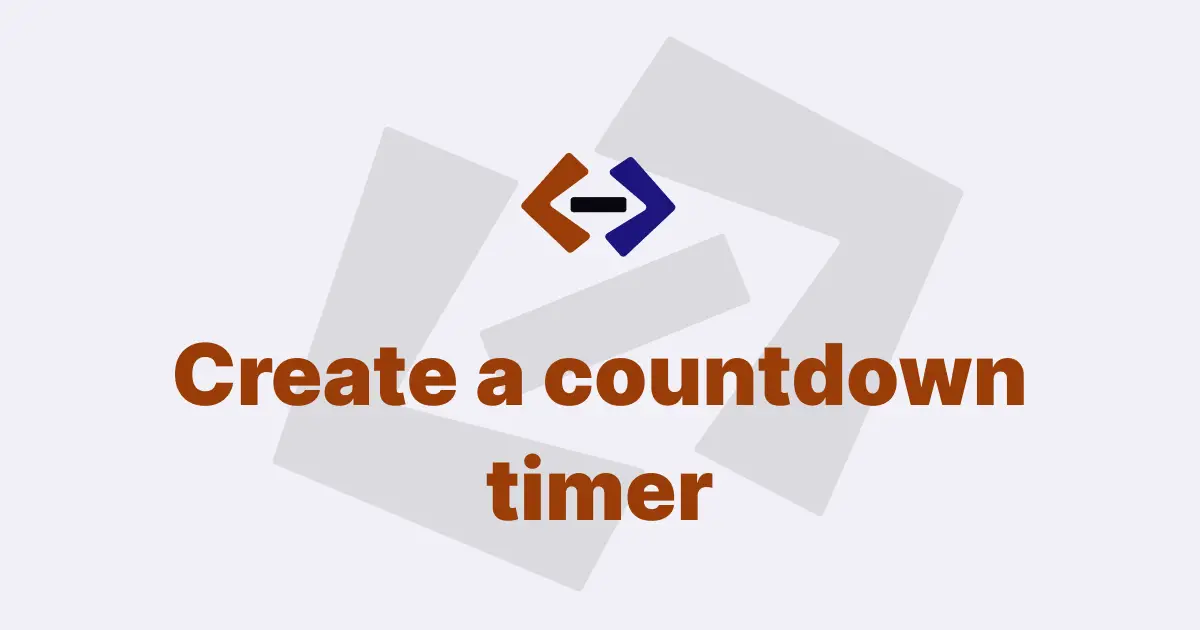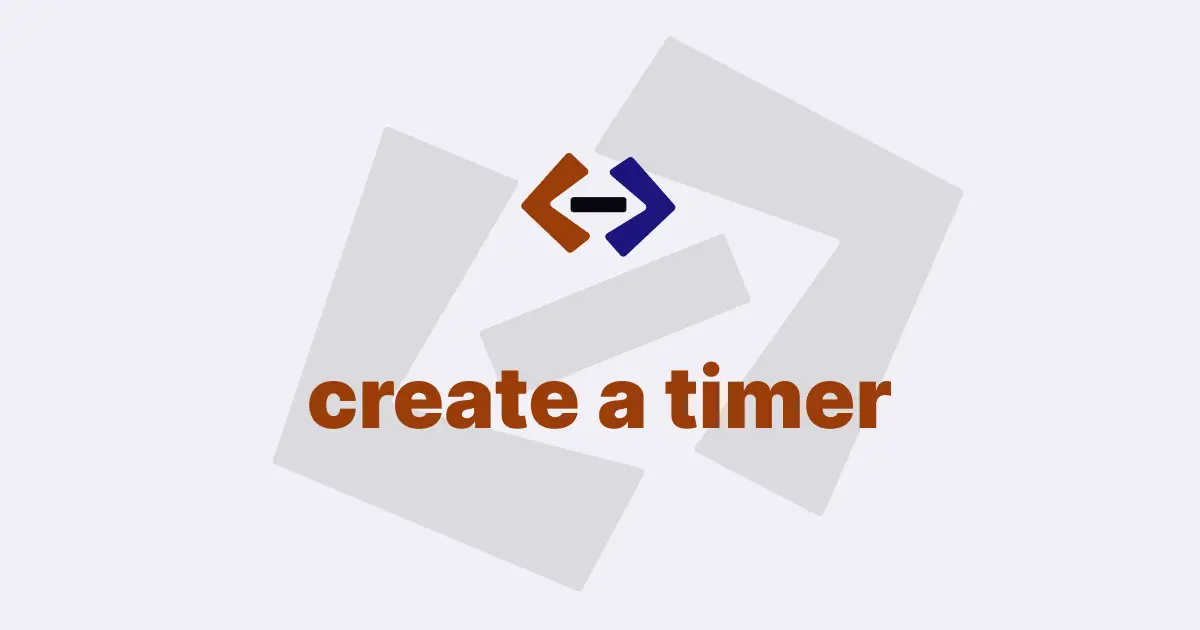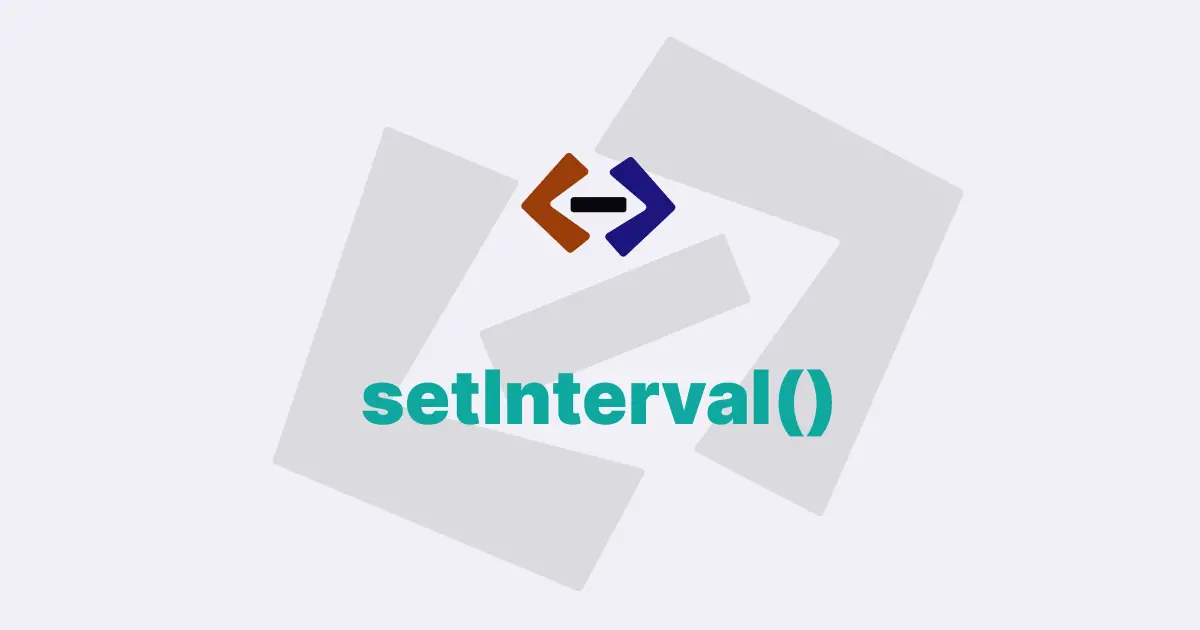The setTimeout() method is a built-in function in JavaScript that allows you to schedule the execution of a callback function after a specified delay. It is commonly used for delaying the execution of code or creating timed animations, among other use cases.
Syntax and parameters:
The syntax for setTimeout() is as follows:
setTimeout(callback, delay[, arg1[, arg2[, ...]]])where:
-
callback: A function that you want to be executed after the specified delay. This function is also known as the “callback function” or the “handler function”. It can be a named or an anonymous function. -
delay: The time, in milliseconds, that you want to delay the execution of the callback function. This is an integer value, and the minimum value that can be specified is 1ms. Note that JavaScript uses a single-threaded event loop, so the actual delay may vary depending on the workload of the thread. -
arg1, arg2, ...: Optional arguments that you can pass to the callback function. These arguments will be passed as parameters to the callback function when it is executed.
How setTimeout() Works
When setTimeout() is called, it schedules the execution of the callback function after the specified delay. The delay is expressed in milliseconds, and it starts counting from the moment setTimeout() is called.
Once the delay expires, the JavaScript engine places the callback function in the event queue. The event queue is a data structure that holds tasks that are waiting to be executed.
The tasks in the event queue are processed by the event loop, which is a continuous process that checks the event queue for tasks and executes them one by one in the order they were added.
It’s important to note that setTimeout() does not block the execution of the code after it. This means that the rest of the code after setTimeout() will continue to execute without waiting for the callback function to be executed. This can sometimes result in unexpected behavior if you’re not careful with your code flow.
For example, if you have code that depends on the result of the callback function, you need to make sure that it is executed only after the callback has been executed. This can be achieved using promises, async/await, or other flow control mechanisms.
Usage of setTimeout() methods:
1. Delayed Execution:
One of the primary use cases of setTimeout() is to delay the execution of code. For example, you might want to show a notification message after a certain period of time, or you might want to display a loading spinner for a short delay to improve the user experience.
setTimeout() can be used to achieve such delayed execution by scheduling the display code in the callback function with the desired delay.
console.log("Start");
setTimeout(function () {
console.log("Delayed Execution");
}, 2000); // 2 seconds delay
console.log("End");Output:
Start
End
Delayed ExecutionIn this example, “Start” and “End” will be printed in the console first, and after a delay of 2 seconds, “Delayed Execution” will be printed.
2. Animation:
setTimeout() can be used to create simple animations by repeatedly updating the DOM or changing the CSS styles at regular intervals. For example, you might want to create a slideshow that displays images one after another with a certain time interval between each image.
setTimeout() can be used to schedule the update code in the callback function with the desired interval.
var images = ["image1.jpg", "image2.jpg", "image3.jpg"];
var currentIndex = 0;
function showNextImage() {
// Update the DOM to display the next image
document.getElementById("image-container").src = images[currentIndex];
// Increment the index for the next image
currentIndex = (currentIndex + 1) % images.length;
// Schedule the next update after a delay of 2 seconds
setTimeout(showNextImage, 2000);
}
// Start the slideshow
showNextImage();In this example, showNextImage() is a callback function that updates the DOM to display the next image in the images array. It uses setTimeout() to schedule the next update after a delay of 2 seconds, creating a slideshow effect.
3. Debouncing and Throttling:
setTimeout() can be used in combination with event handlers to implement debouncing and throttling techniques. Debouncing is a technique that delays the execution of a function until a certain amount of time has passed since the last invocation, while throttling limits the frequency of function invocations to a certain rate.
setTimeout() can be used to achieve both of these techniques by scheduling the function invocations with the desired delay.
var input = document.getElementById("input-field");
var debounceTimeout;
function handleInputChange() {
// Perform the debounced action after a delay of 500ms
clearTimeout(debounceTimeout);
debounceTimeout = setTimeout(function () {
// Perform the debounced action here
console.log("Debounced action");
}, 500);
}
input.addEventListener("input", handleInputChange);In this example, handleInputChange() is an event handler for an input field that performs a debounced action. It uses setTimeout() to schedule the action after a delay of 500ms. If another input event occurs before the delay expires, the previous setTimeout() is cleared using clearTimeout() and a new setTimeout() is scheduled, effectively debouncing the function invocation.
4. Asynchronous Operations:
setTimeout() can also be used to simulate asynchronous operations in JavaScript. Although JavaScript is a single-threaded language, it can use setTimeout() to simulate asynchronous behavior by scheduling tasks to be executed after a certain delay, giving the appearance of concurrency.
This can be useful in scenarios where you need to perform operations that may block the main thread, such as making API calls or performing time-consuming computations.
function fetchFromAPI() {
// Simulate API call with a delay of 1 second
setTimeout(function () {
// Perform API call here
console.log("API call complete");
}, 1000);
}
console.log("Start");
fetchFromAPI();
console.log("End");In this example, “Start” and “End” will be printed in the console first, and after a delay of 1 second, “API call complete” will be printed. This simulates an asynchronous API call that doesn’t block the main thread and allows other code to continue executing.
5. Error Handling:
setTimeout() can be used to handle errors in asynchronous code. For example, if you have a promise-based asynchronous operation that takes longer than expected to complete, you can use setTimeout() to add a timeout to the operation and handle the error if it times out.
function fetchData() {
return new Promise(function (resolve, reject) {
// Simulate fetching data from a server with a delay of 5 seconds
setTimeout(function () {
// Simulate successful data fetch
var data = "Data fetched successfully";
resolve(data);
}, 5000);
});
}
function fetchWithTimeout() {
// Create a promise that resolves after a timeout of 3 seconds
var timeoutPromise = new Promise(function (resolve, reject) {
setTimeout(function () {
reject(new Error("Data fetch timed out"));
}, 3000);
});
// Use Promise.race() to race the data fetch promise with the timeout promise
return Promise.race([fetchData(), timeoutPromise]);
}
// Call the fetchWithTimeout() function
fetchWithTimeout()
.then(function (data) {
console.log(data); // Data fetched successfully
})
.catch(function (error) {
console.error(error); // Data fetch timed out
});In this example, fetchData() simulates fetching data from a server with a delay of 5 seconds using a Promise. fetchWithTimeout() wraps fetchData() in a Promise that adds a timeout of 3 seconds using setTimeout(). If the data fetch takes longer than 3 seconds, the timeoutPromise will reject with an error indicating that the data fetch timed out.
This allows you to handle errors in asynchronous code, such as API calls, using setTimeout() to add a timeout mechanism.
Thank you for reading, and let’s have conversation with each other
Thank you for reading my article. Let’s have conversation on Twitter and LinkedIn by connecting.


